As a Master Gardener, I Always Recommend These 7 Shrubs for Amazing Fall Color
Keep your garden vibrant through the fall with Susan Albert's pick of the best shrubs for fall color...
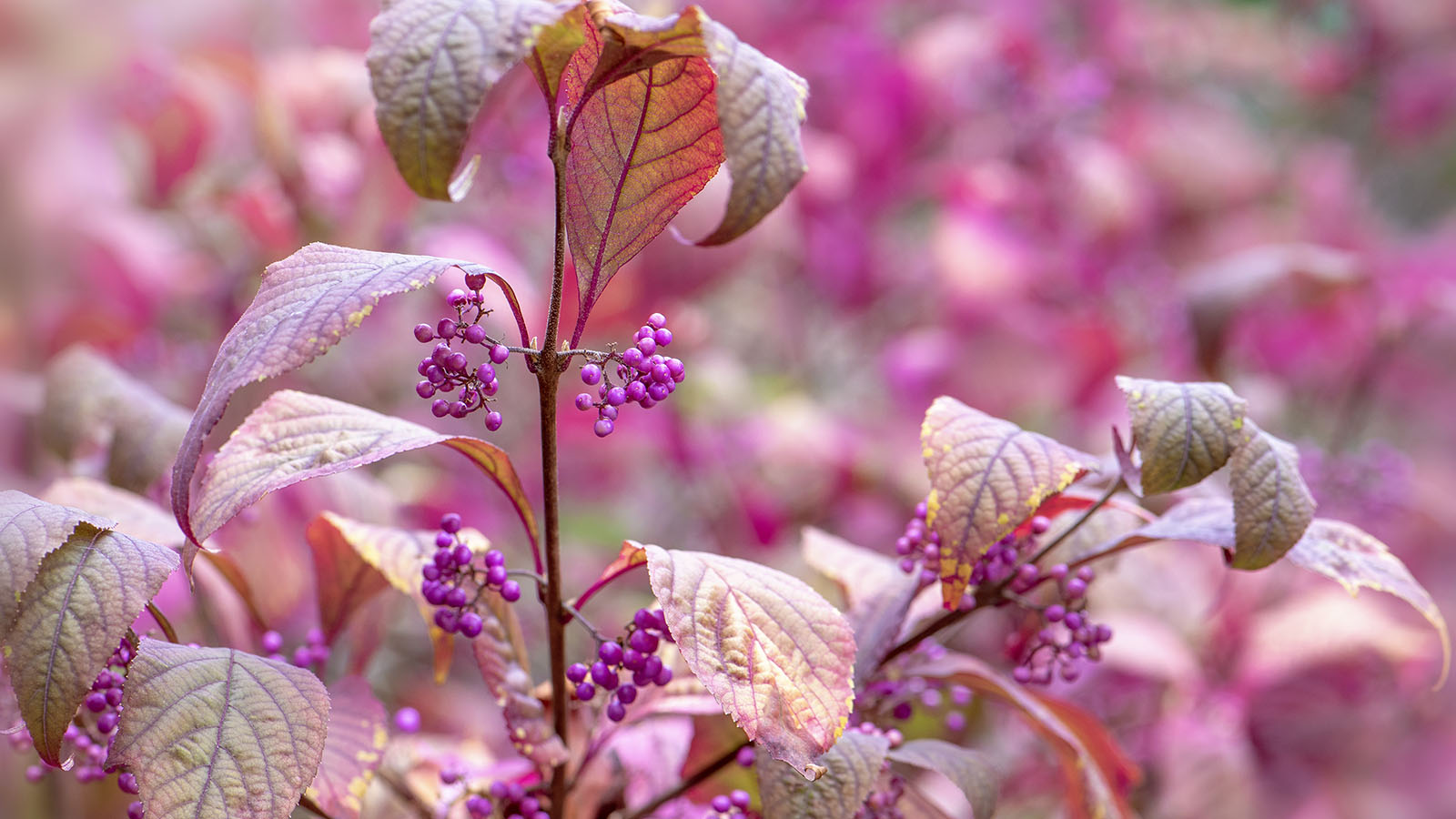

If you want to change a ho-hum green border from dull to fabulous, especially in the darker months, adding shrubs that provide sizzling fall color is a brilliant place to start.
Why? Because they make for a dramatic transition from green foliage to reds, purples, oranges, and golden yellow, lighting up the landscape in no time.
Personally, I’ve always found that colorful fall shrubs are a quick way to rejuvenate a summer-weary yard, especially when they’re combined with fall blooming shrubs. At a time when the landscape may be languishing, it breathes new life into it with vivid color.
My Must-Have Fall Shrubs for Fabulous Color
Native shrubs as well as non-natives are excellent choices for incorporating autumn color. Besides the color change, native species offer the most value to wildlife.
With that in mind, here are my must-have shrubs for fall color…
1. Virginia Sweetspire
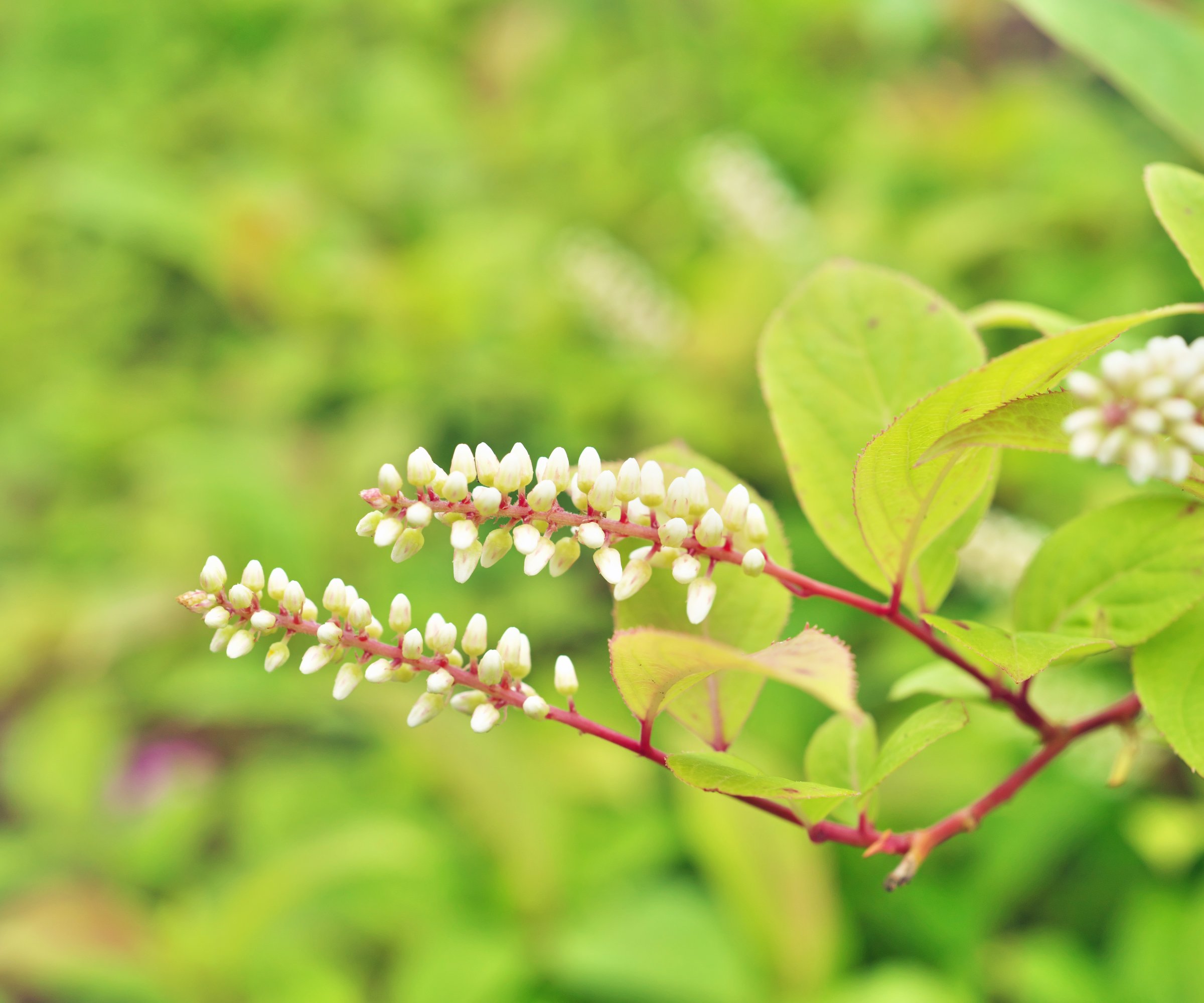
A U.S. native, Virginia sweetspire (Itea virginica) is grown for its multi-season interest and wildlife value. In spring, the deciduous shrub’s white, bottlebrush-like flower clusters attract pollinators, and the seeds are eaten by songbirds in the fall. The dark green leaves turn shades of red, orange, purple, and gold, and last well into winter.
The shrub blooms on the previous season’s growth, so prune after flowering, if needed. It’s adaptable to several soil conditions but prefers moist, slightly acidic, fertile soil. It has a rounded growth habit, reaching 4 to 8 feet (1.2 to 2.4 m). ‘Henry’s Garnet’ and ‘Little Henry’ are popular cultivars.
Sign up for the Gardening Know How newsletter today and receive a free copy of our e-book "How to Grow Delicious Tomatoes".
Something like Proven Winners' Itea virginica Little Henry, from Green Promise Farms via Amazon, would work well in USDA Plant Hardiness Zones 5-9.
2. Oakleaf Hydrangea
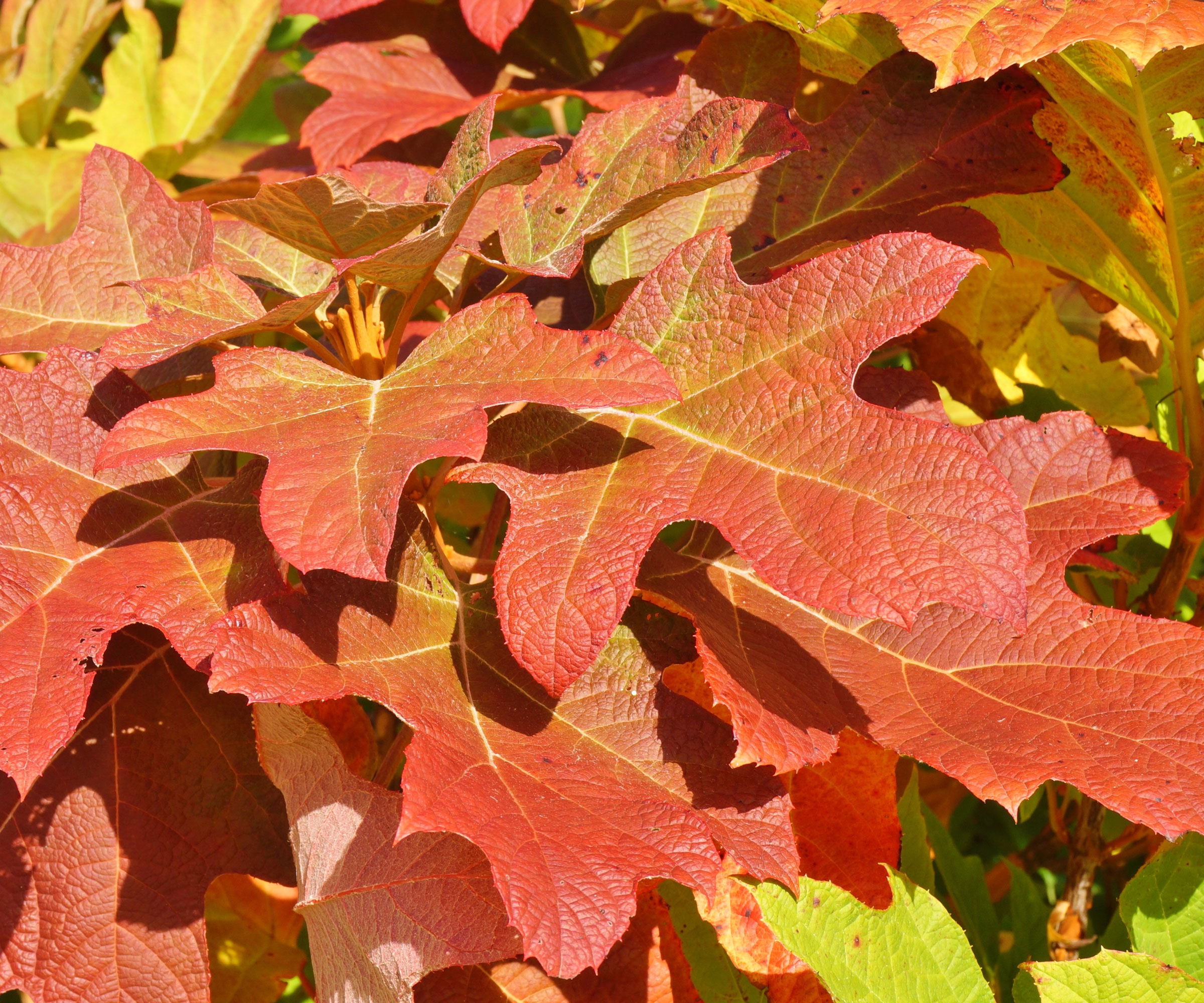
Oakleaf hydrangea (Hydrangea quercifolia) is a deciduous, U.S. native hydrangea with large leaves that resemble oak tree leaves. It produces pyramidal, white flower clusters in summer, changing to dusky pink, then tan in fall. In autumn, its leaves turn shades of crimson, orange, purple, and gold.
Give it at least part sun to get the best flowers and fall color. Height varies from 4 to 8 feet (1.2 to 2.4 m), and remember it prefers highly organic, well-drained soil in USDA hardiness zones 5 to 9.
Try something like Monrovia's Ruby Slippers Dwarf Oakleaf Hydrangea Bush, available from Lowe's for something a little different.
3. Tiger Eyes Sumac
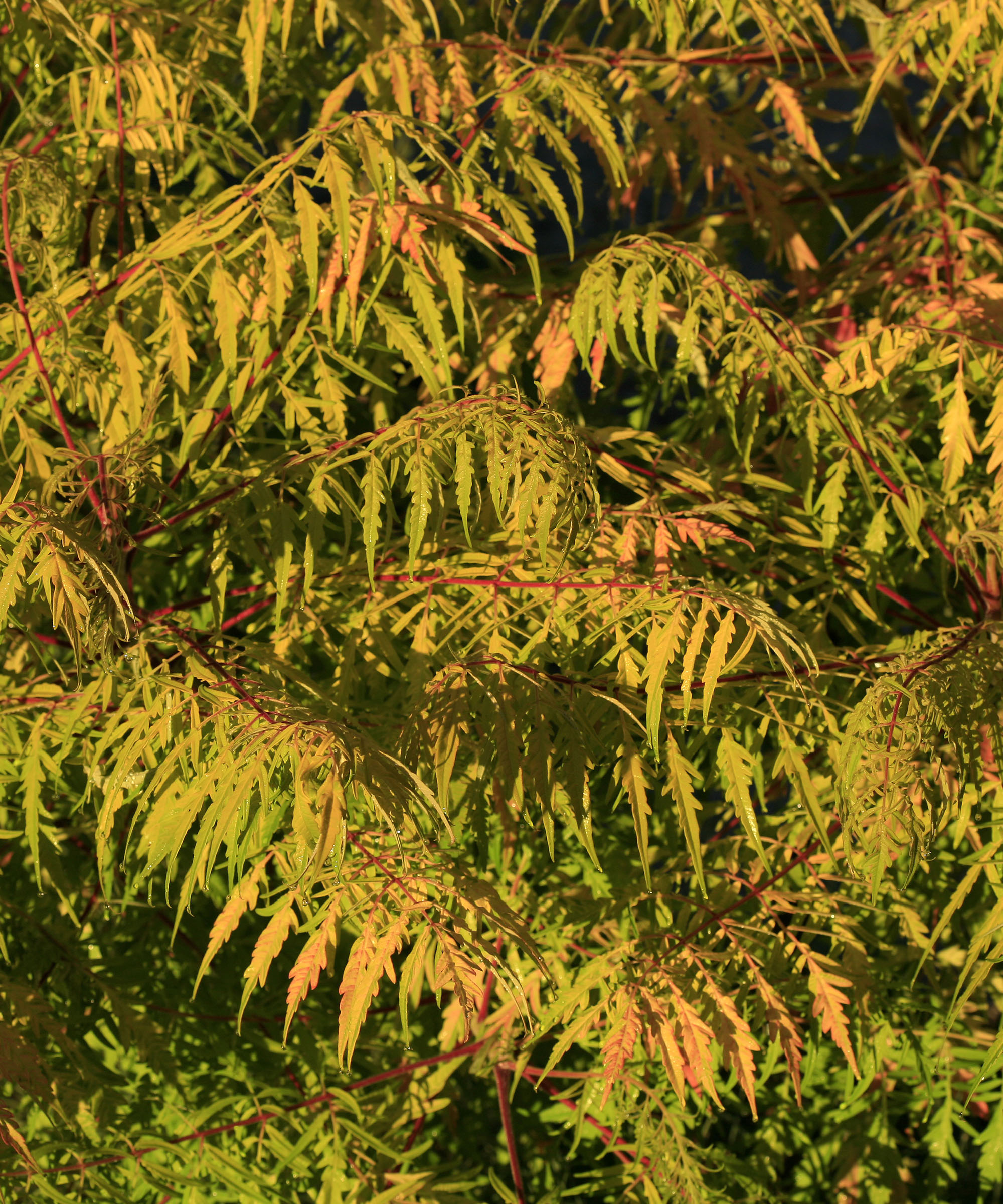
Tiger Eyes sumac (Rhus typhina ‘Bailtiger’ PPAF) is colorful all year round, starting with deeply dissected, chartreuse foliage in spring, changing to bright yellow in summer set against purple branches. Fall foliage is enhanced with vivid red and orange, creating a stunning sunset effect.
Female plants produce attractive fruiting clusters in fall that persist into winter. The deciduous, dwarf cultivar only reaches about 6 feet (1.8 m) tall with limited colonizing.
Hardy to USDA zones 4 to 8 in well-drained soils and full to part sun, try something like Sooner Plant Farm’s Tiger Eyes sumac.
4. American Beautyberry
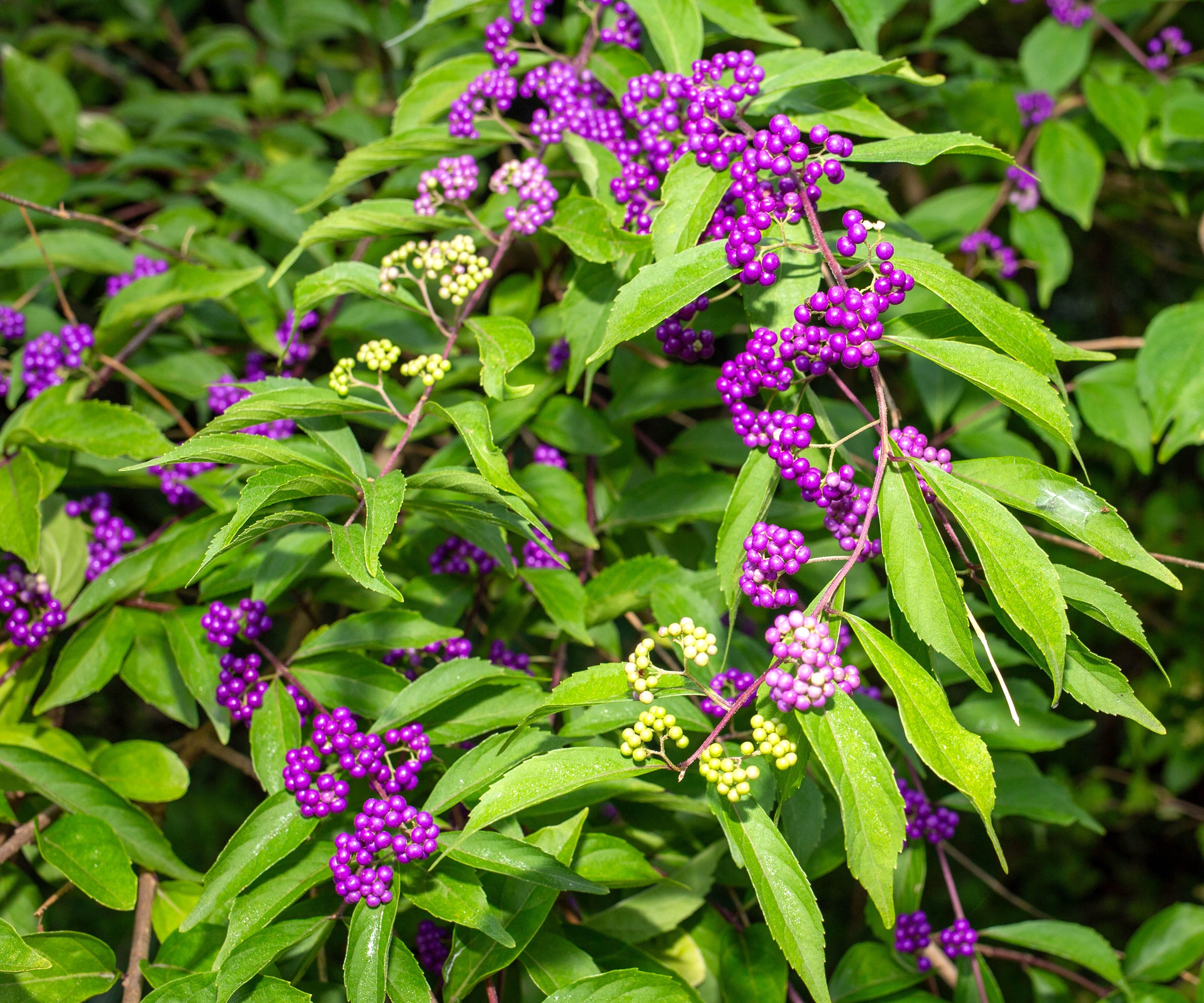
American Beautyberry (Callicarpa americana) is a deciduous, U.S. native shrub whose leaves turn bright yellow in fall, contrasting against its iridescent purple berries that encircle the stems at leaf axils. Songbirds and small mammals relish the fruits that persist into fall, and lavender-pink blooms precede the berries in summer.
Take care, as the arching stems can grow up to 8 feet tall (2.4 m) with a 6-foot (1.8 m) spread, so give it ample room. It can be cut back to 1 foot (0.3 meters) in late winter as it flowers and fruits on new growth. It thrives in moist, well-draining soil in full sun to light shade in USDA zones 6 to 11.
You can pick up a pre-grown Proven Winners American Beautyberry from Home Depot, if you’re keen to add some purple to your yard this fall.
5. Viburnum
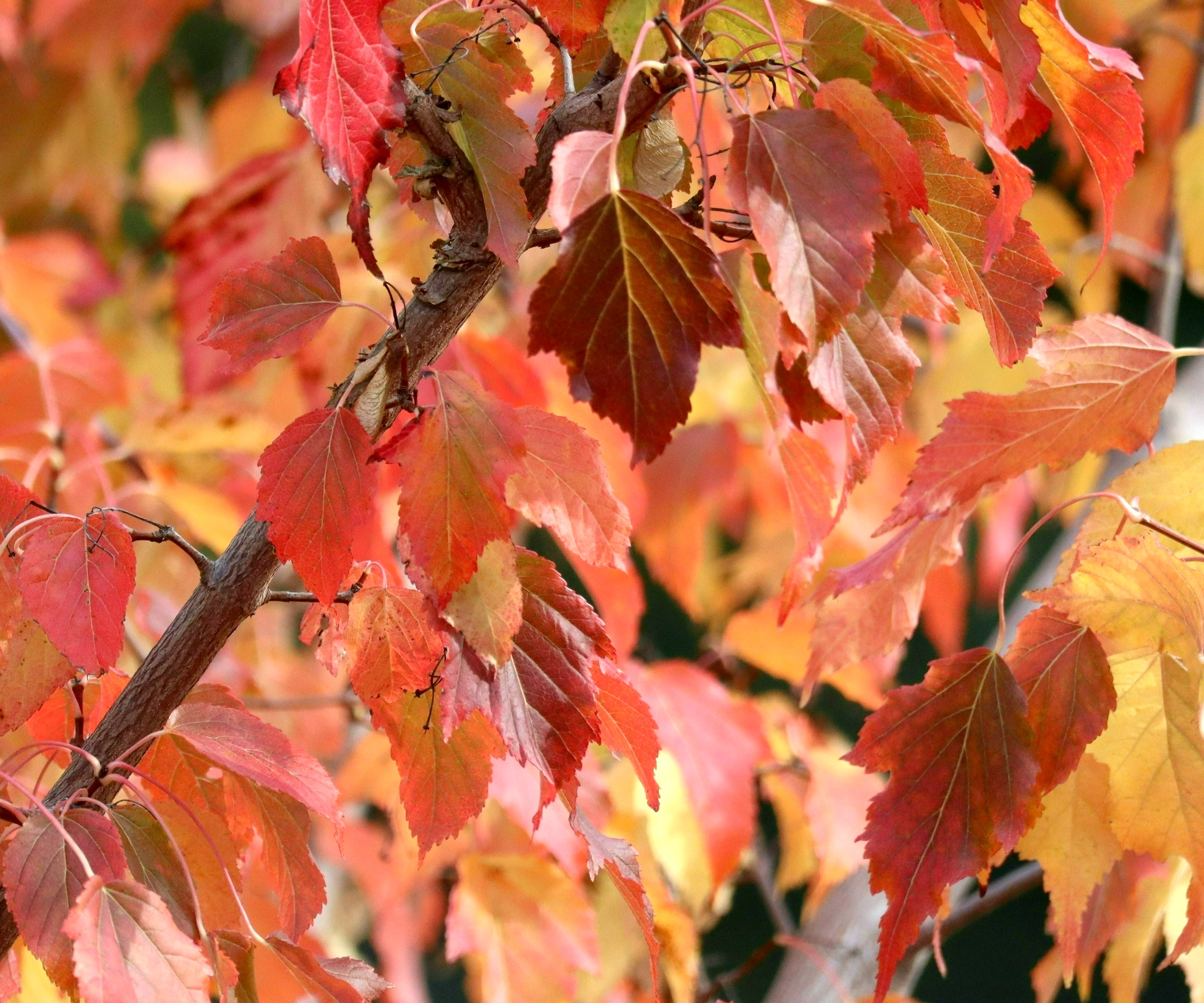
Viburnum (Viburnum spp.) – whether Arrowwood, American Cranberrybush, Mapleleaf, or Blackhaw – offer dazzling fall color, as well as fruit (although for the latter, another strain of viburnum is needed for pollination purposes).
Viburnums’ spring flowers attract pollinators, and the fruit is enjoyed by birds and small mammals. Depending on the variety, they grow from 4 to 15 feet (1.2 to 5 m), and they bloom on old wood, so prune soon after flowering if needed.
Viburnums are easy to grow in full sun to part shade in varying USDA zones 3 to 9. Mapleleaf viburnum is more shade-tolerant and is suitable for a woodland garden, but Nursery Central's Arrowwood Viburnum Shrub, available via Amazon is also a great shout.
6. Smokebush
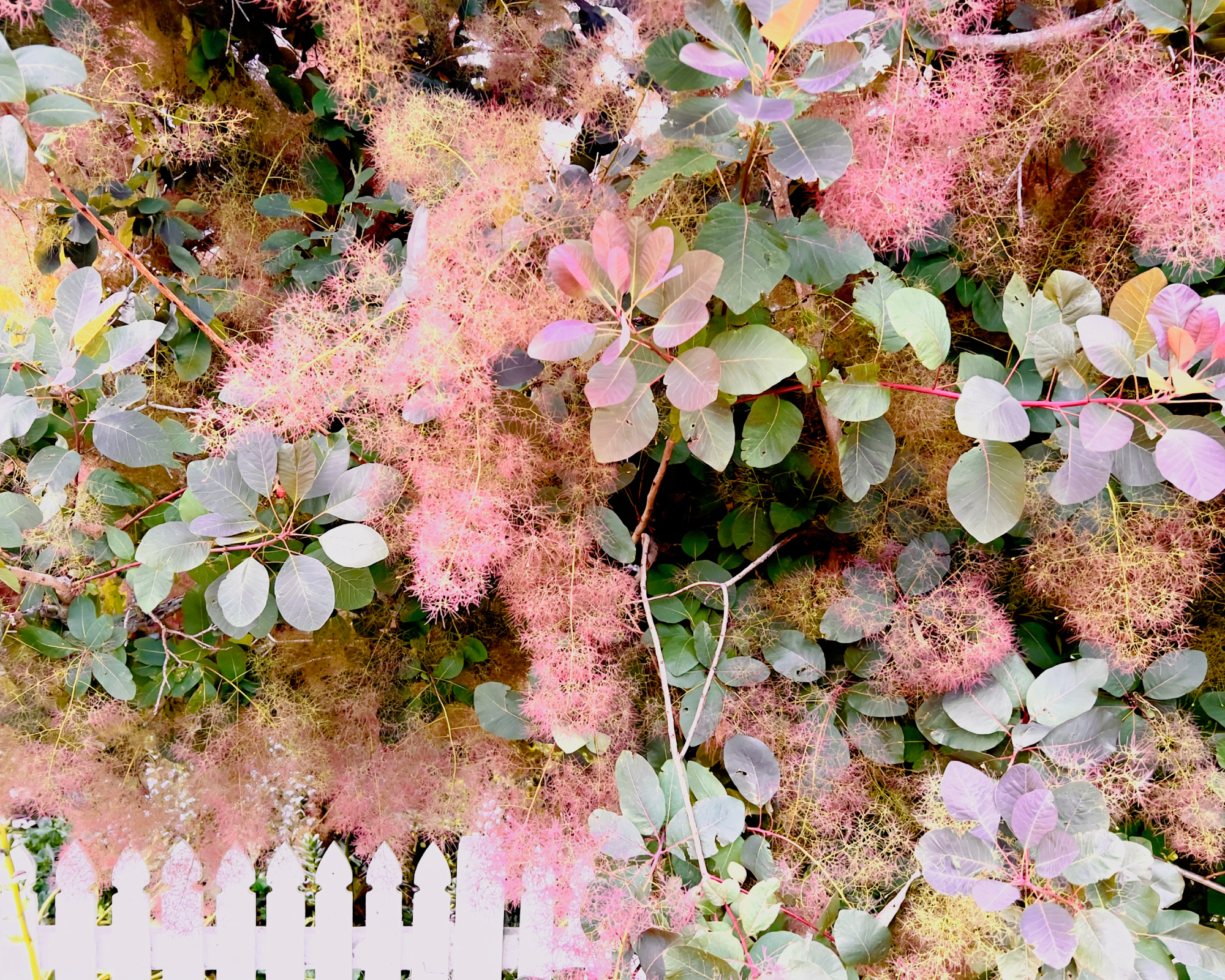
Smokebush (Cotinus coggygrea) is another shrub that boasts colorful foliage all year, particularly if you grow a purple-leaved variety such as ’Royal Purple’, from New Life Nursery via Amazon. In the fall, the purple foliage turns a deeper shade of crimson.
The fall foliage of hybrid Cotinus x ‘Grace’ turns from plum red to shades of orange-red. The “smoke” comes from the wispy seedheads that also are highly ornamental.
Smokebush can grow to 15 feet (5 m) tall and tolerates poor soil. It is hardy in USDA zones 4 to 10.
7. Dwarf Fothergilla
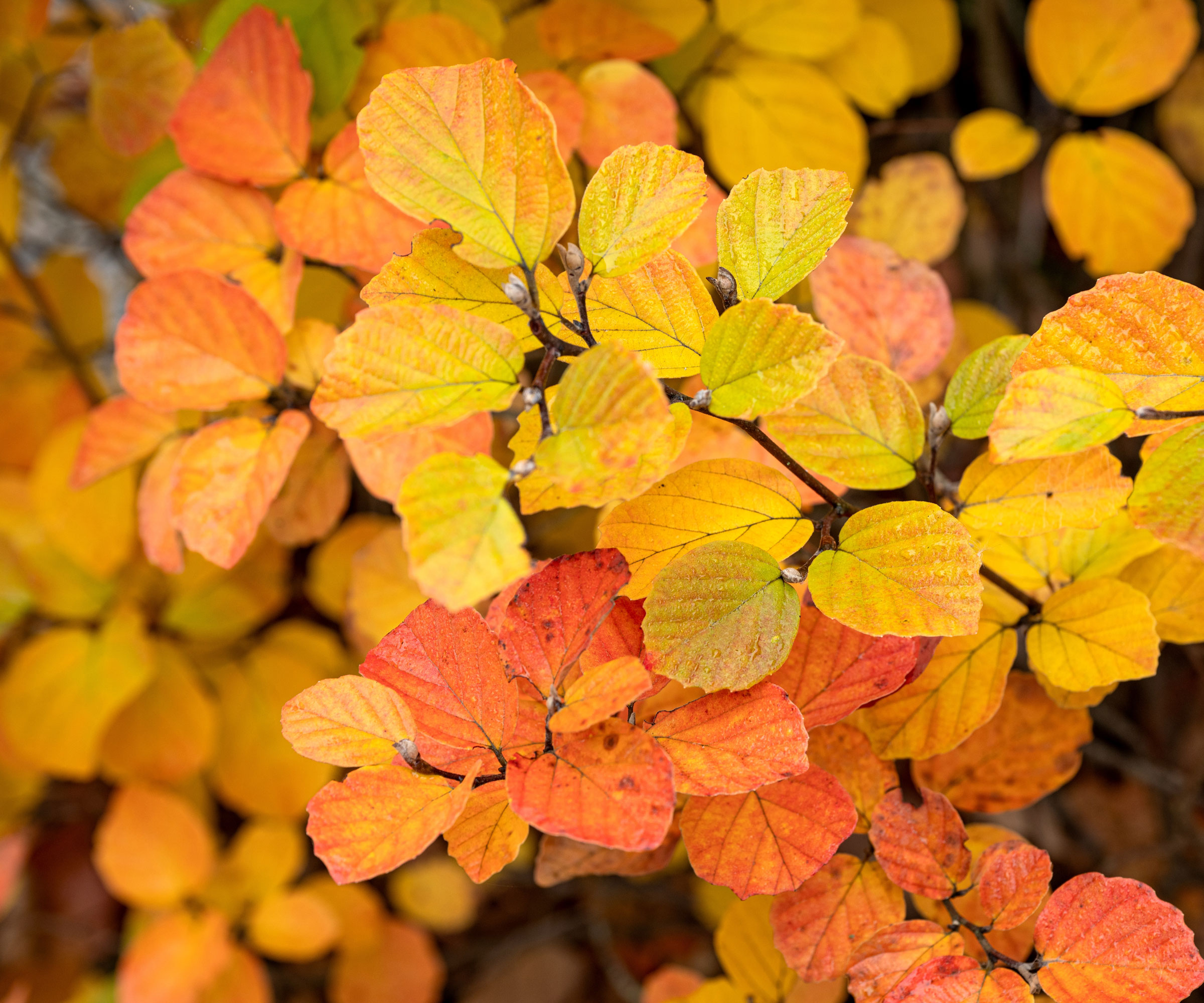
Fothergilla (Fothergilla gardenii) is an underused U.S. native shrub that is ideal for a small space, topping out at only 2 to 3 feet tall and wide (0.6 to 0.9 m). In spring, the shrub is covered in bottlebrush-style white flowers; then in fall, the blue-green leaves turn shades of yellow, red, and orange.
Plant something like Green Promise Farms' Fothergilla gardenii, via Amazon, then, in moist, slightly acidic soil, somewhere with full to part sun, in USDA zones 4 to 9.
Choosing Fall Color Shrubs
Autumn is the best time to plant shrubs, and not just because it also gives you the opportunity to see the plants’ fall colors before purchasing. Plants should be in the ground six weeks before cold winter weather sets in, after all, but this season’s cool weather and warm soil are ideal for root development.
After planting, remember to keep your shrub well-hydrated through the winter. It is easy to forget watering in the fall and many plants succumb to winter’s cold if they are not established, so please do your research before heading to the garden center and look for plants that are in your hardiness zone.
Know, too, the light levels and soil requirements of the plants you are interested in and match them with the location you want to plant. The eventual height and width is important, too, so you avoid pruning excessively to make a plant fit in a tight spot.
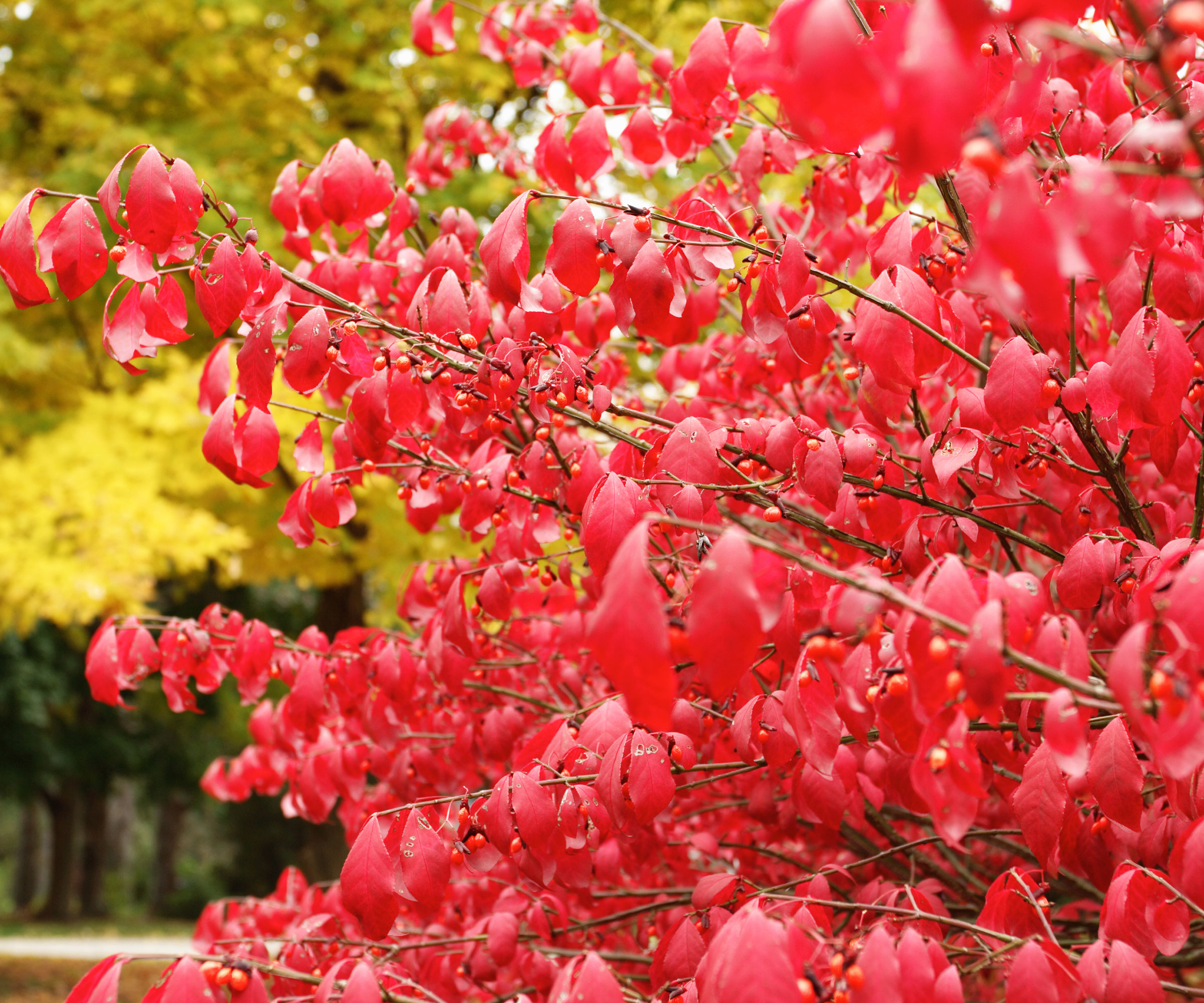
Finally, but by no means least, steer clear of burning bush (Euonymus alatus), once the go-to shrub for bright red fall color.
After decades of landscape use, it is now identified as invasive, with the potential to displace native flora. It is banned or restricted in several states, including Massachusetts, Minnesota, Maine, New Hampshire, New York, and Pennsylvania.
So, which of these shrubs will you be planting for amazing fall color? Let’s get our landscape filled with all things bright and beautiful.
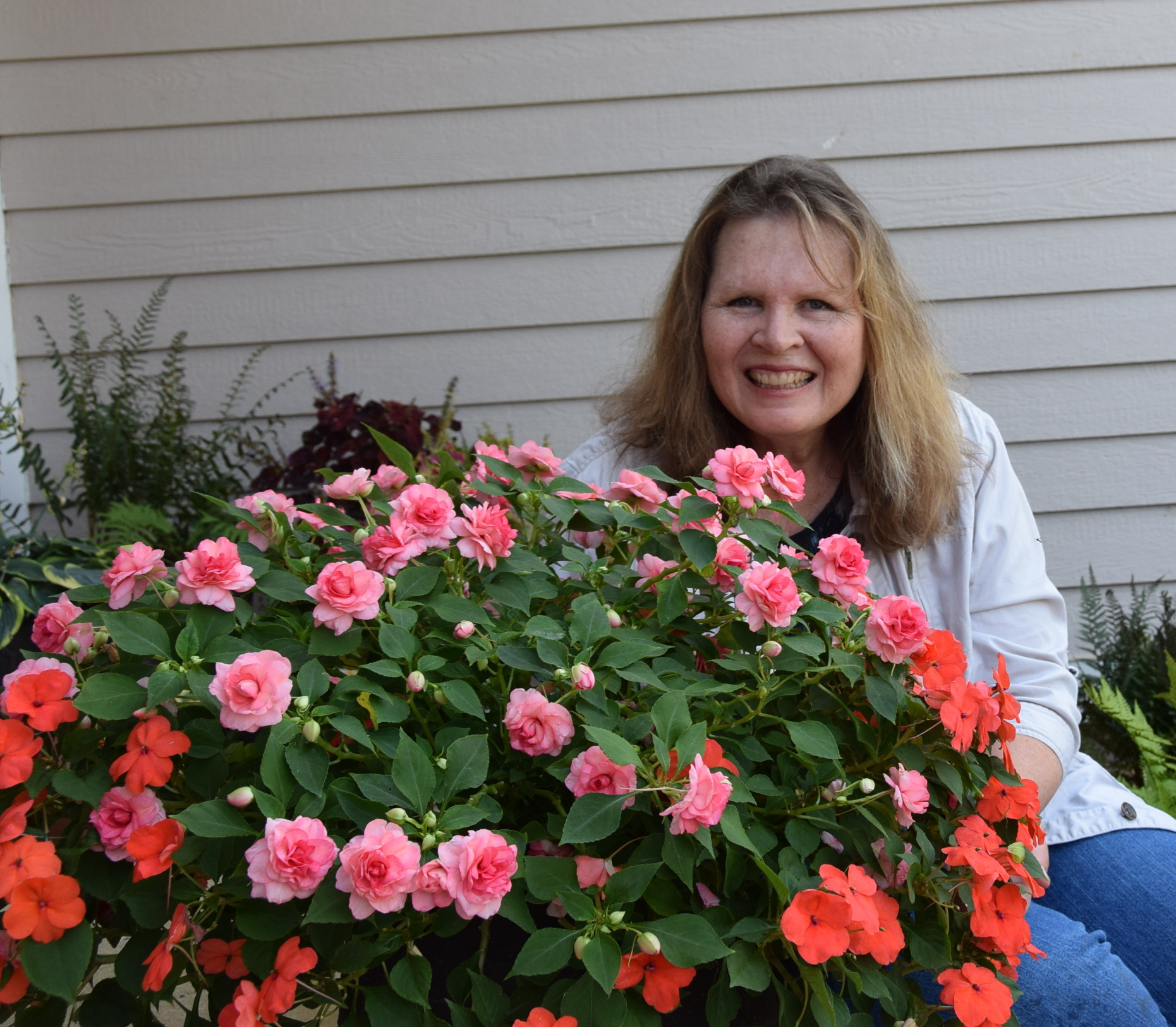
After graduating from Oklahoma State University with a degree in English, Susan pursued a career in communications. In addition, she wrote garden articles for magazines and authored a newspaper gardening column for many years. She contributed South-Central regional gardening columns for four years to Lowes.com. While living in Oklahoma, she served as a master gardener for 17 years.